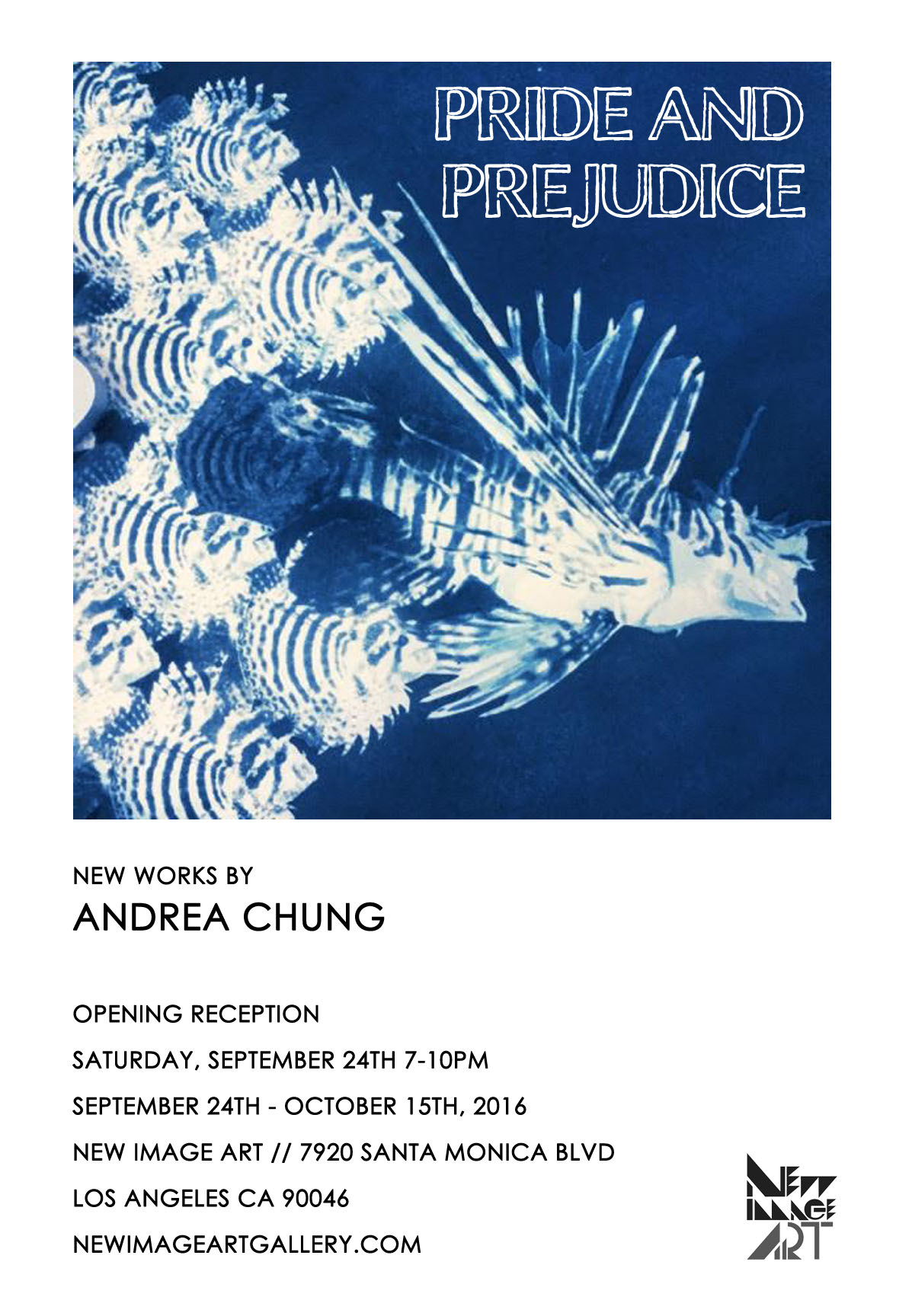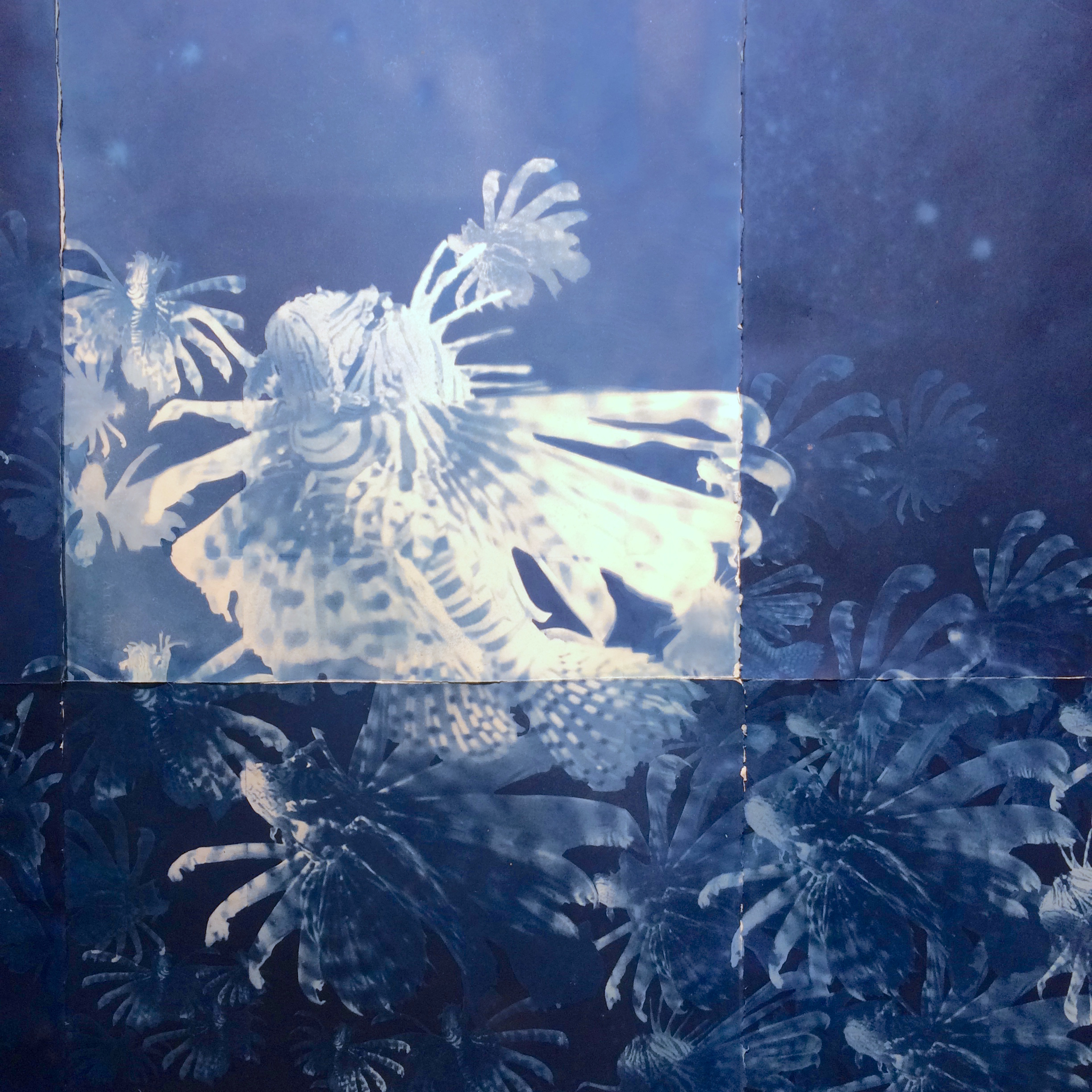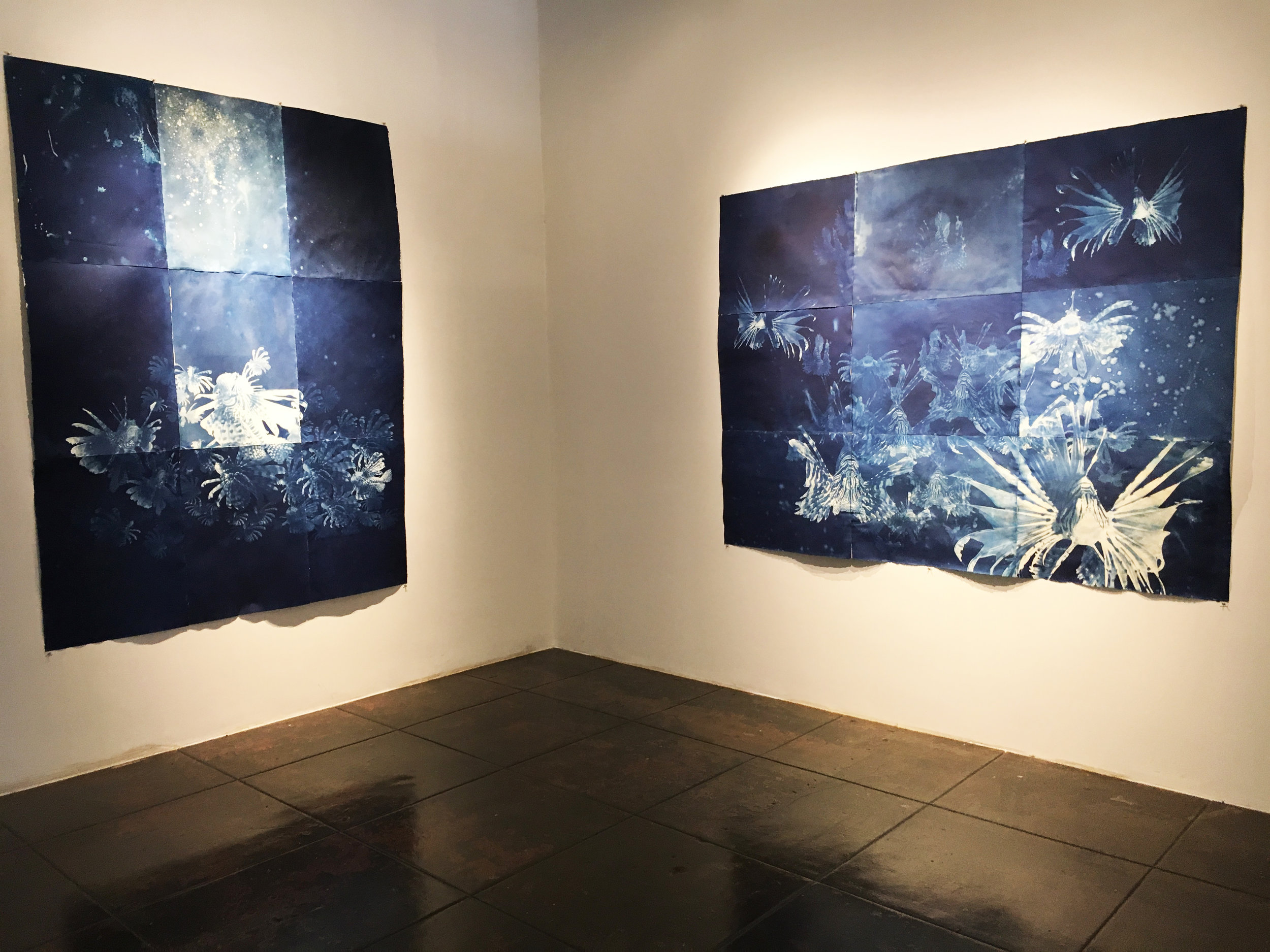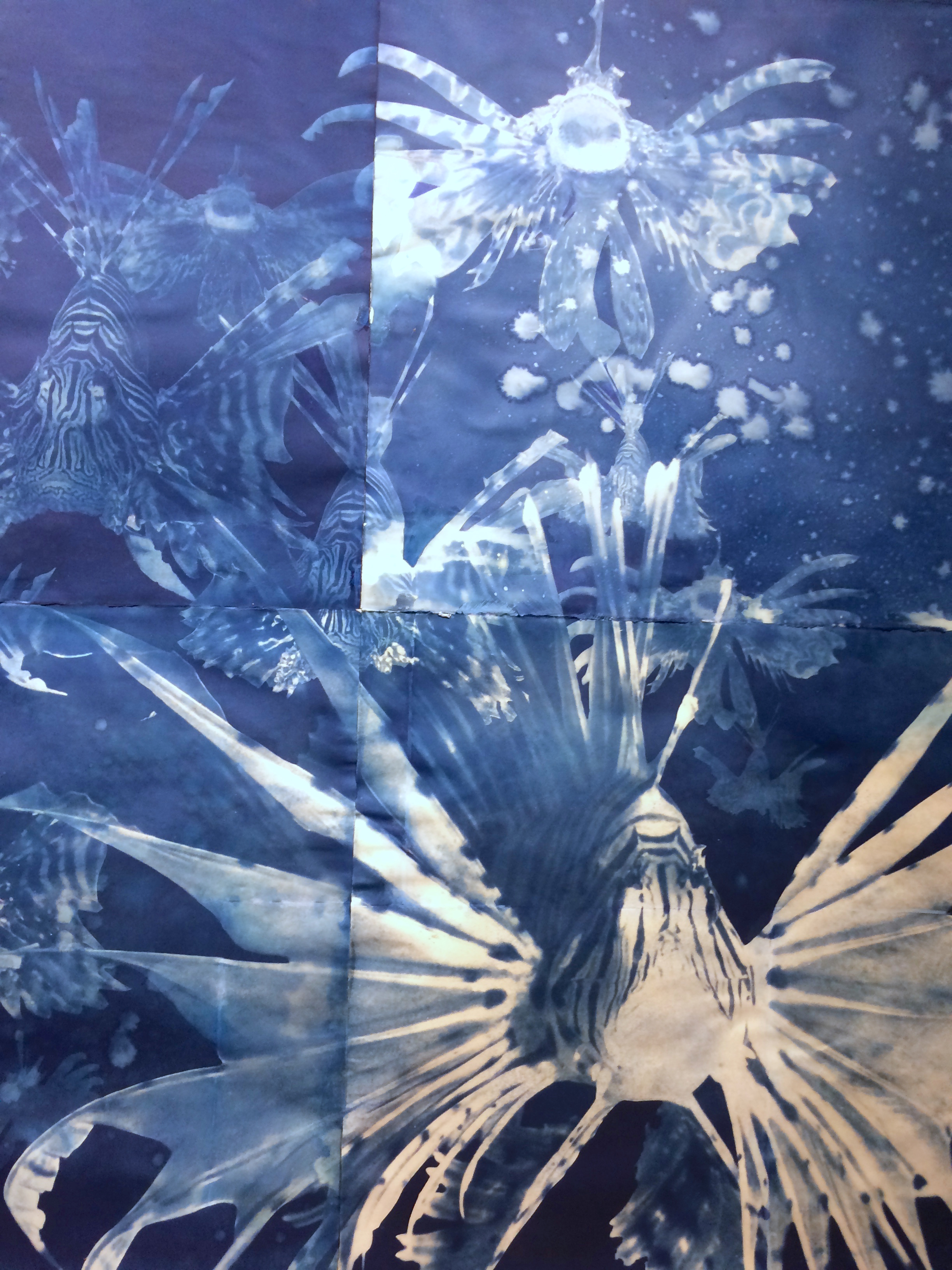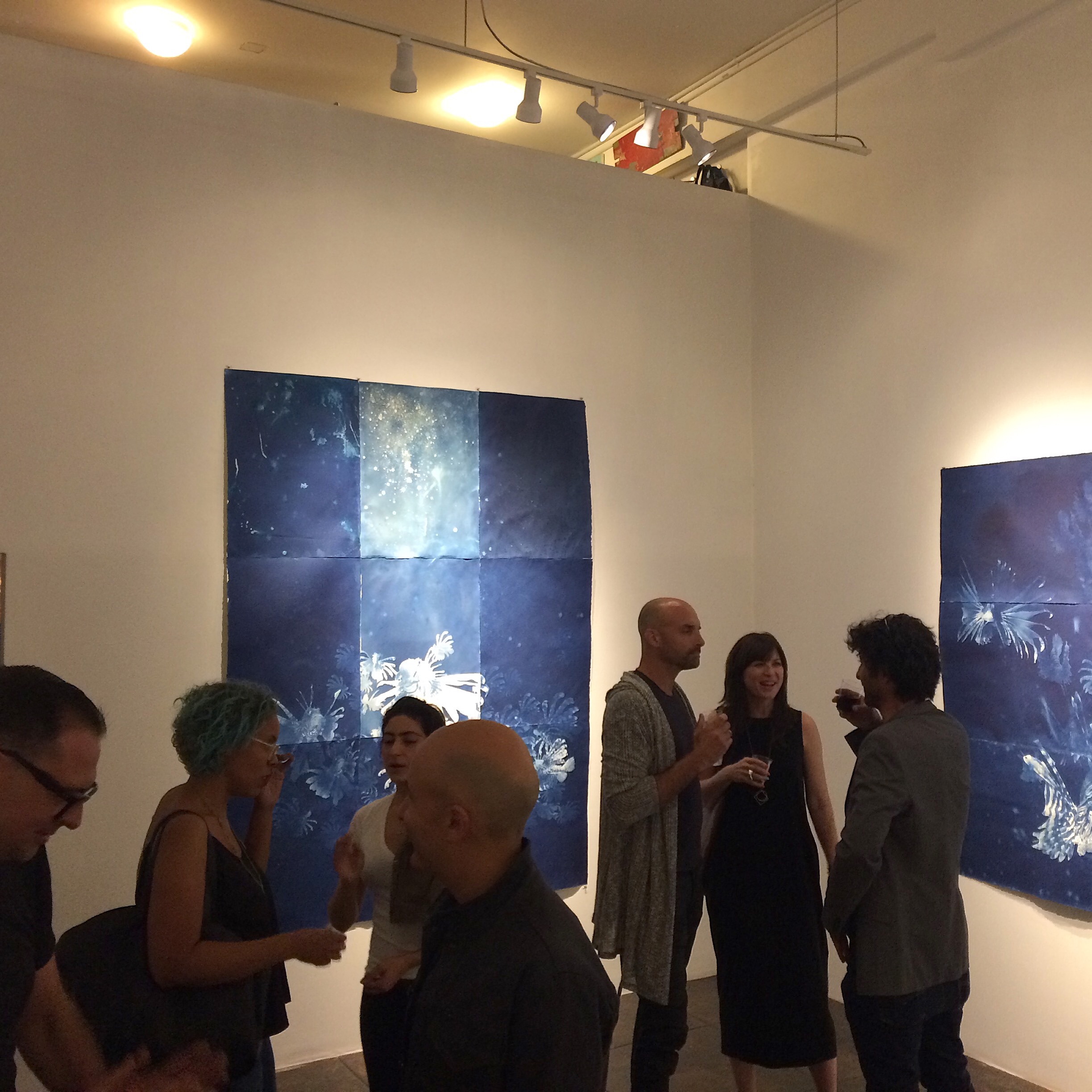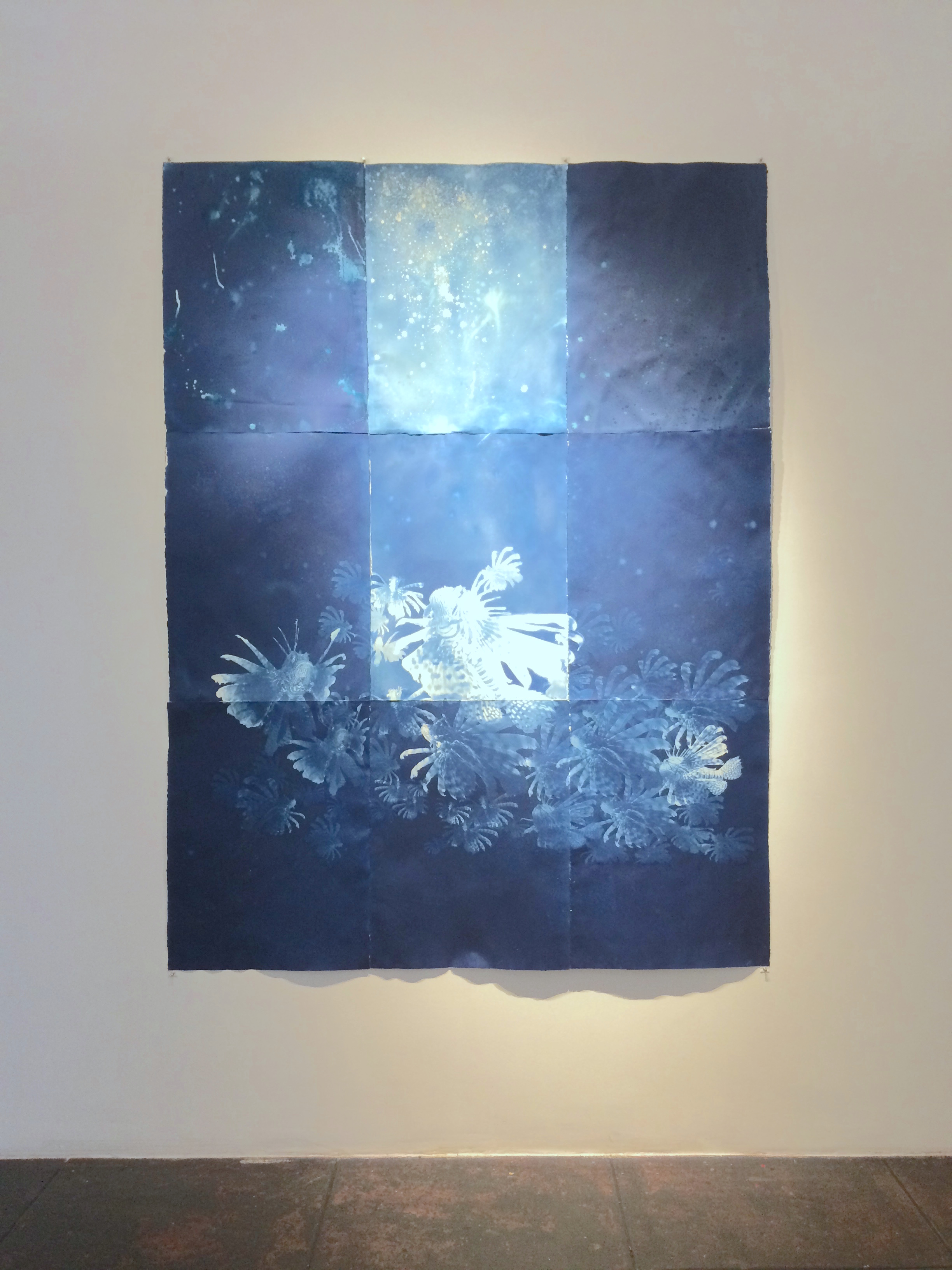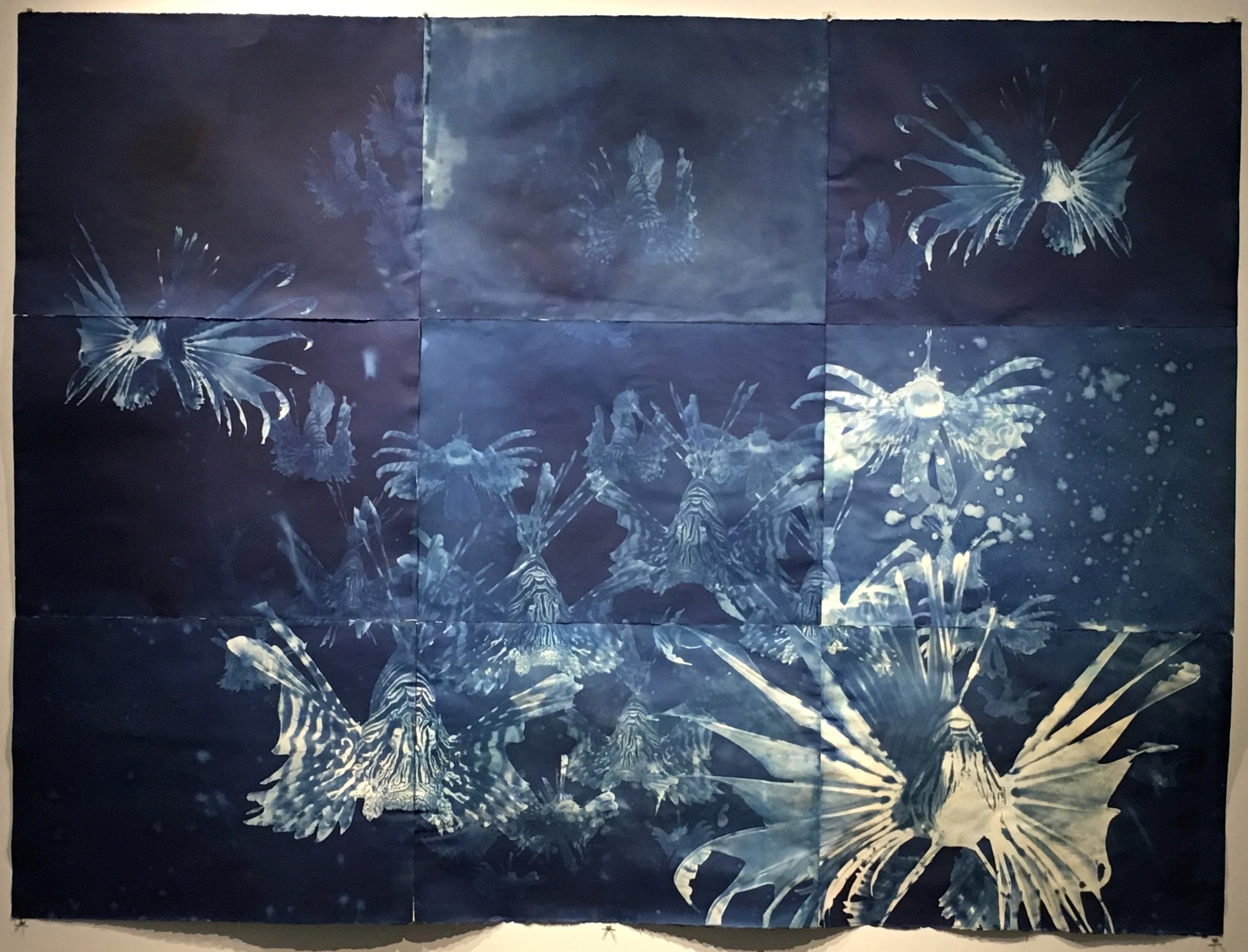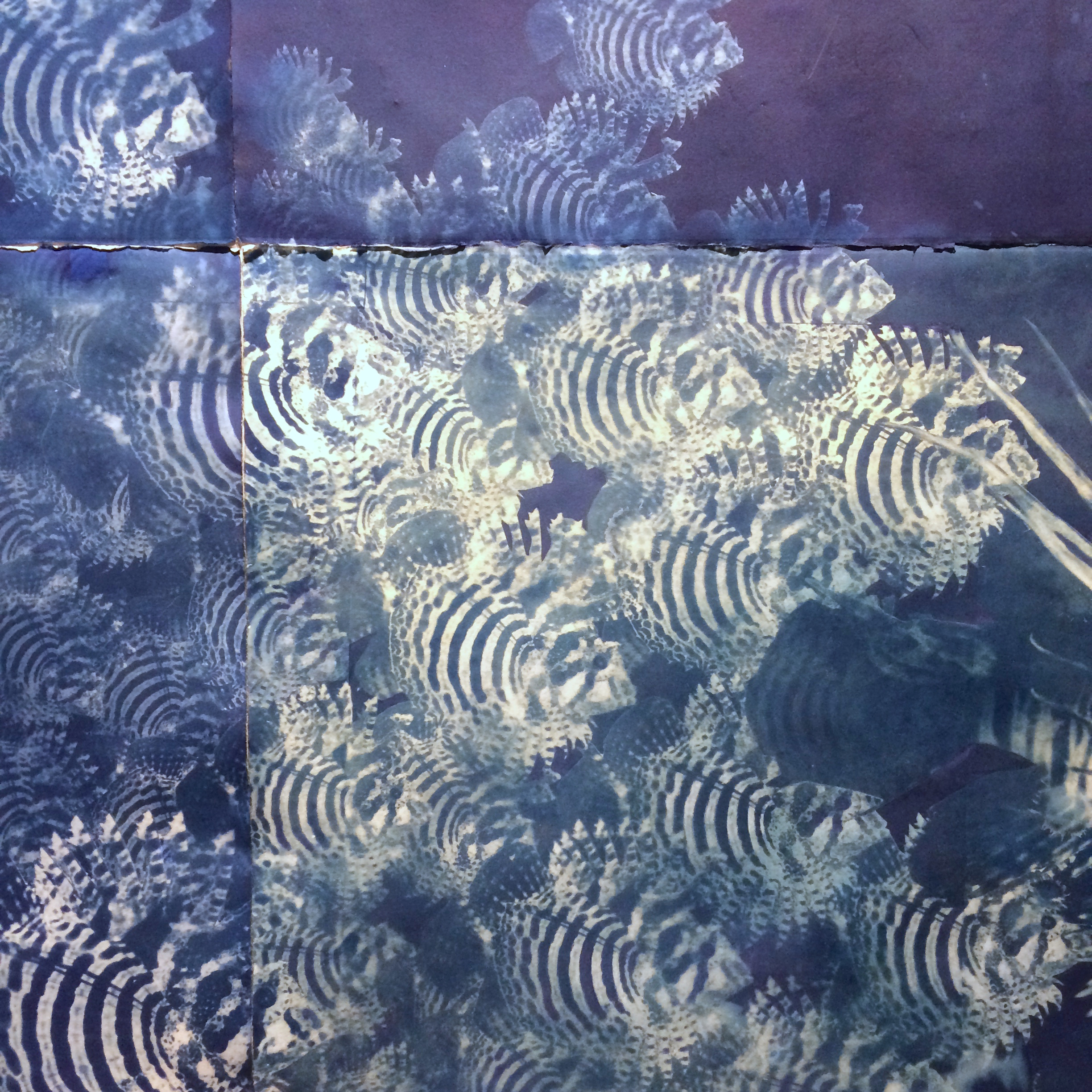My exploration into cyanotypes comes from my interest in photography and its relationship with the caribbean. The development of early photography came after the end of slavery in the Caribbean and the only pre-emancipation images that exist are paintings and drawings commissioned by the colonial regimes for proaganda purposes. The British in Jamaica, for instance, staged post-emnacipation photographs and both types of images were used to sell a fantastic version of the Caribbean, a paradise peopled by docile, jovial workers. The legacy of that fantasy figures heavily in my work because it persists in tourism materials, which I often mine for inspiration and imagery, and in the global imagination. While the visual imagery produced during colonial period cannot be understood without heavy contextualization, there are artifacts that do give a clear picture of colonization. These are not pictures at all, but ship logs, ledgers, and other documentation that were generated by the meticulous planning that went into colonization. The cyanotype process is important for this series because of its association with prints from nature but also because of its association with the quintessential planning document, the blueprint, which places it at the intersection of ideas that I am exploring.
For the past few years I have been collecting articles about the lionfish invasion in the Caribbean. They have been destrying coral reefs and since they are non-native, they have no local predators. Their invasion is a fitting metaphor for colonization in a at least two different ways: they are non-natives that are reshaping their environment to serve themselves but they were also brought there without consideration for their will.
The images in Pride and Prejudice depict images of lionfish, arranged in various military formations, on their way to battle. While the images are confrontational, I have left them partially ambigous. I also construct the fish armies out of the same basic shapes so that the viewer must decide who the colonizer is, and our relationship to them.
